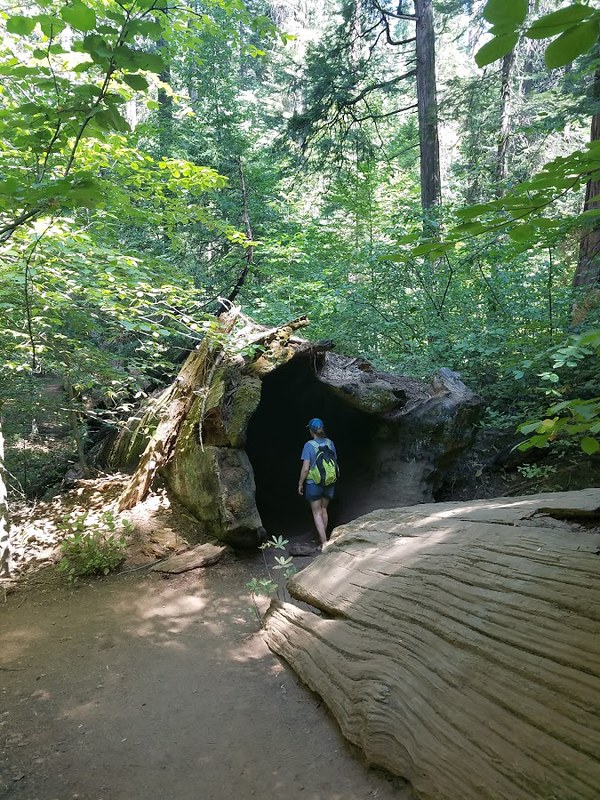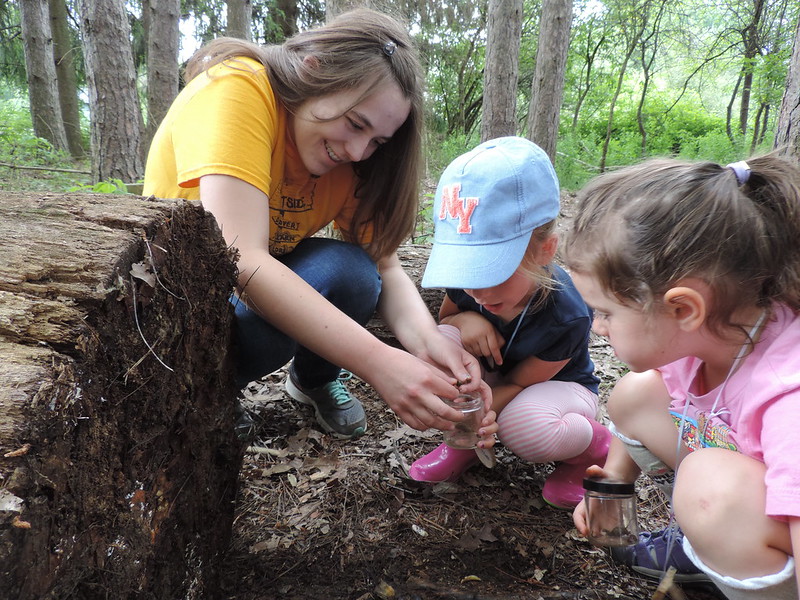I can clearly remember the first time I found myself in a grove of Giant Sequoias. On the first night of a camping trip, a group of us went out on a night hike under an almost full moon. We had the trail to ourselves and the entire experience was overwhelming in the best possible way. I also remember realizing the loss of that wonder after months of bringing students to see these amazing trees. Some of that original camping group piled into a car and drove a few hours to see General Sherman, potentially the largest single tree in the world. Objectively, we knew this tree should be greeted with awe, but instead faced with our anticlimactic reaction at the feeling that it was just another large tree, I began to realize how easy it is to lose that sense of awe when faced with something familiar.
Observing and interpreting the natural world around us does a fair job of summing up the overarching description of my last four years of work. However, this practice of close observation and finding the wonder in the familiar is also something I historically struggle with when by myself, and I am far from alone in getting caught up in moving as quickly as possible to get to the end of the trail.

According to the Oxford dictionary, observation is “the action or process of observing something or someone carefully or in order to gain information.” This requires you to stop and really notice your surroundings; to see not only the big picture, but to notice, question, and interpret the details that make up the greater puzzle. So many of us are constantly moving and even when we head out for a hike, we still tend to keep up this pace. Often when hiking, someone will look up and remark that this is the first time they have looked up from the ground in front of them in the last thirty minutes. I am guilty of the same thing; keeping my head down and my feet moving forward. What I sometimes forget, is that when we focus solely on moving forward, we miss the opportunity to observe.
Luckily, it’s easy to fall back into this practice when you’re with others who cultivate that sense of discovery, and no one does that better than a group of kids. I have an immense appreciation for working with children whose curiosity regarding what is under and around them is a default state, and I have always unabashedly lived vicariously through their eyes. Children are the best teachers in this endeavor to reclaim the feeling of wonder brought about by close observation. It happened each time I brought a new group of students to see those Giant Sequoias and they stood under that tree, looking up with a chorus of “oohs” and “aahs.”
You do not need to be standing next to a Giant Sequoia to evoke this same reaction. Tell any group of third graders to look around outside for five minutes and they will find you an entire insect collection, a few salamanders, at least four different kinds of lichen and moss, and any number of animal holes, seeds, nuts, and leaves. Although I find each of these things fascinating and interesting, I am guilty of moving too fast to even know they are there. This unbridled amazement has been a constant reminder to slow down and to realize that as adults, we are still capable of feeling that wonder of discovery.
This idea of losing your sense of wonder as you grow up has been bouncing around my head for years, so it seemed inevitable when another Audubon staff member pulled out a book I immediately recognized. This long form essay written by Rachel Carson, compiled with full page photos, was made into a book called, appropriately, ‘The Sense of Wonder’. Here, Rachel Carson, a scientist and writer, documents her exploration, night hikes, and wanderings of the rocky beaches and lush forests of Maine with her young nephew. Using memories and stories, she pushes for the idea of nurturing a child’s sense of wonder with the natural world, no matter the accompanying adult’s knowledge base. The point is not to successfully identify every plant and animal, but instead that the adult joins the child in discovery and adventure, asking questions and making observations with the child.

This book affirms the idea that is not necessary to know what every bird and insect is on sight in order to explore nature whether with a child or on your own, as long as you are curious. It is through observation and asking questions that we continue to be amazed at the natural world and feel a sense of ownership. ‘A Sense of Wonder’ is a reminder to slow down and look for the small things under rocks and on logs, in puddles and on the branches above us.
A person is far more likely to ask questions and retain facts and information if they have a reason to seek it out on their own and a deep enough connection to cement that knowledge in their brain. Nature is rarely stagnant, so whether you are walking around the trails at Audubon Community Nature Center or in your own backyard, you can still stop and see something new any time of the year. Even if you never find out the answer to your question, the curiosity is enough to keep us coming back to the outdoors to find the next amazing thing.
Audubon Community Nature Center builds and nurtures connections between people and nature. ACNC is located just east of Route 62 between Warren and Jamestown. The trails are open from dawn to dusk as is Liberty, the Bald Eagle. The Nature Center is open from 10 a.m. until 4:30 p.m. daily except Sunday when it opens at 1 p.m. More information can be found online at auduboncnc.org or by calling (716) 569-2345.
Chelsea Jandreau is a Nature Educator at ACNC.


Recent Comments